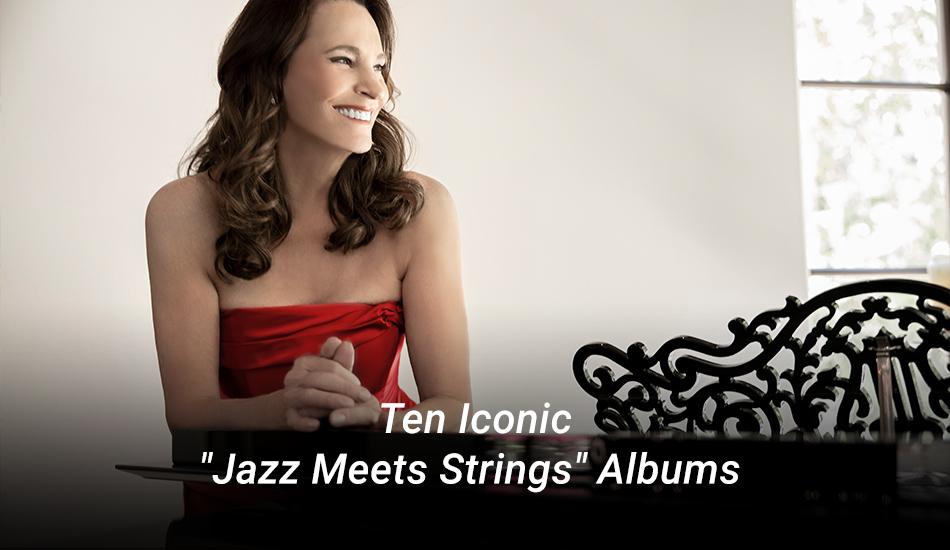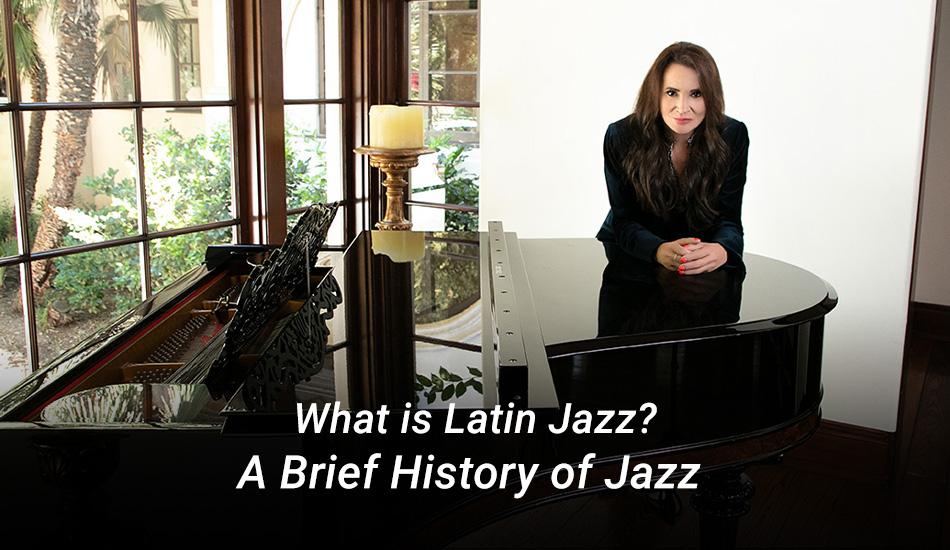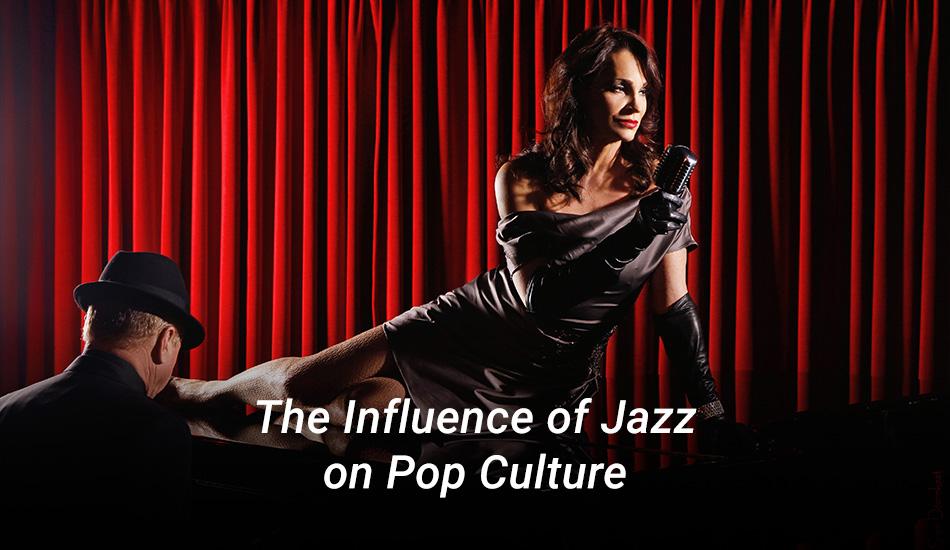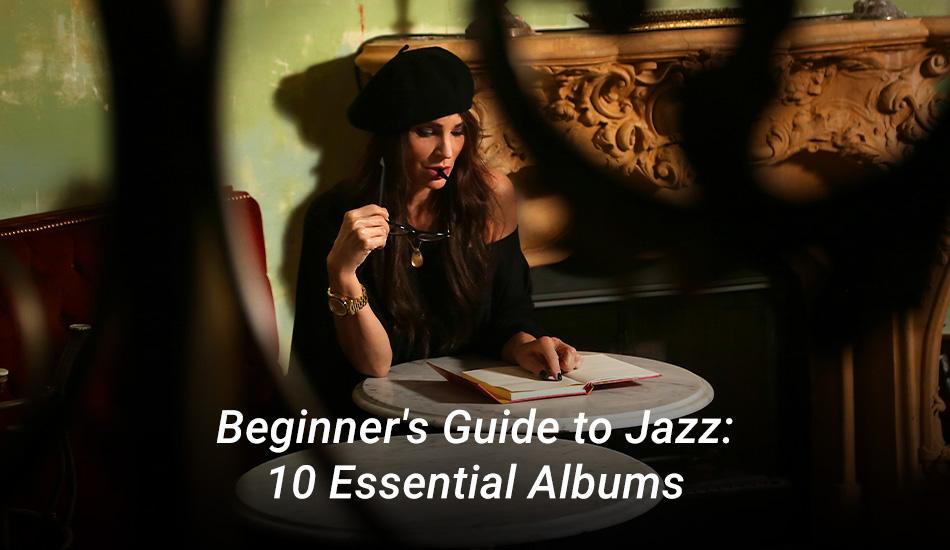
by dynamite | May 22, 2023 | Blog
Jazz with strings combines jazz’s passion with an orchestra’s power. In the 1920s, Jean Goldkette and Paul Whiteman’s bands used strings. There is a deep fascination among jazz musicians with classical music and how jazz can be combined with an orchestra without diluting the potency of jazz improvisation or the complexity of classical orchestration. The greatest jazz albums with strings featuring jazz musicians are listed below:
Stan Getz – Focus (Verve)
The arguably best Stan Getz album, recorded in 1961, features seven compositions commissioned by Getz and written and arranged by Eddie Sauter. This album features seven pieces, overshadowed by Bossa Nova albums recorded a few years later. A saxophonist’s composition, ‘I’m Late, I’m Late,’ is about more than slow tempos and sumptuous strings.
Charlie Parker with Strings (Verve)
On November 30, 1949, Parker achieved a long-held ambition to record with strings. The string arrangements should be more impressive, but Parker’s solos still shine through. The song “Just Friends” by John Klenner and Sam Lewis from the first session has become synonymous with Parker with strings.
Clifford Brown with Strings (EmArcy)
The Clifford Brown-Max Roach Quintet was a hot jazz group. Clifford Brown took time out of his busy schedule to record his string album in January 1955 with three quintet members assisting him — Max Roach on drums, Richie Powell on piano, and Gorge Morrow on bass.
Billie Holiday – Lady in Satin (Columbia)
Recorded in February 1958, Lady in Satin’s album reveals a broken woman. Her voice may shadow her former self, but she is determined to make an album with strings and insists that Ray Ellis write for her, resulting in a sad and inevitable sound. When new songs challenge Billie, she responds with heartfelt interpretations, albeit with a sense of sadness.
Chet Baker With Strings (Columbia Legacy)
A jazz quintet and nine-piece string section accompany Chet Baker’s lyrical trumpet playing. The trumpeter was relatively young at the time, just 24, but his playing had an endearing air of quiet confidence. He plays with a lot of attitude on ‘I’m Through With Love’ and with Zoot Sims on ‘A Little Duet With Zoot and Chet.’
Paul Desmond – Desmond Blue (RCA Victor)
Paul Desmond was best known as part of Dave Brubeck’s quartet but also recorded under his name. Aside from featuring his regular guitarist Jim Hall, Desmond’s album also features an entire string section and additional woodwinds. While his light and airy sound suits the album well, his fantastic yet insightful solos prevent it from becoming an easy listen.
Wes Montgomery – Fusion! (Riverside/OJC)
The title of this album is unusual for a musician who doesn’t seem to meld jazz with rock or classical music. Still, we have a relaxed, comfortable Wes Montgomery playing some familiar tunes. Even though this album is more flexible than the others, it is satisfying to hear the artist at work.
Bill Evans Trio With Symphony Orchestra (Verve)
It was recorded in October and December 1965, and Bill Evans has reportedly been proud of it. The arrangements by Claus Ogerman sometimes seem flimsy and light, but they still leave a lot of room for the pianist, his bassist Chuck Israels, and his drummer Larry Bunker or Grady Tate.
Art Pepper – Winter Moon (OJC/Galaxy)
The saxophonist passed away on June 15, 1982, after recording this album with strings in early September 1980. A late entry for Art Pepper, this beautiful recording was released the following year. Pepper was aware of the limited time he had left during his last five years, and this recording is one of his most beautiful.
Phineas Newborn, Jr. – While My Lady Sleeps (Bluebird/RCA)
Phineas Newborn Jr While My Lady Sleep was released on the RCA Victor label in 1957 and features Dennis Farnon and His Orchestra. This recording of Phineas’ standard repertoire features the tunes his listeners enjoy most.
Final Words
A great jazz singer, Sylvia Brooks is dedicated to bringing the healing power of music to people. A few of Jazz with Strings’ original albums are very popular. Listen to jazz music albums if a lister wants to dive deeper into this genre.

by dynamite | Apr 23, 2023 | Blog
Overview
The jazz genre encompasses many styles, including smooth jazz, bebop, blues, swing, and more. In addition to the variety of styles, listeners should consider the different techniques composers use in their compositions. If you are a beginner to jazz piano, it can be beneficial to expose yourself to different jazz styles.
Here are some of the most famous jazz piano songs you can learn to play are as follow:
The Entertainer – Scott Joplin
Scott Joplin was a famous American pianist in the Belle Epoque of the 1900s when he composed The Entertainer in 1902. The jazz chords in RagTime can be hard to master at first. There are a few offbeats in the best jazz songs. According to the 100 Songs of the Century list, this song ranked 10.
Hit the Road Jack – Ray Charles
When Ray Charles recorded Hit the Road Jack in 1961 on ABC Records, it was awarded the best R&B song at the 1961 Grammy Awards. It is well known in the jazz world as We Wish You a Merry Christmas is in the world of piano Christmas songs because of its upbeat rhythm and distinctive jazz chords.
Rag Charleston – Eubie Blake
As a great American jazz and ragtime composer and pianist, Eubie Blake has contributed to many musical works, including Shuffle Along, the first Broadway musical directed by African-Americans. Her jazz title Charleston Rag is well-known in the jazz world, and her unique chords charm.
What a Wonderful World – Louis Armstrong
Louis Armstrong’s music describes nature’s beautiful landscapes in What a Wonderful World, written by Bob Thiele and George David Weiss in 1967. It became an enormous success in 1968.
Despite being unknown, this jazz song remains one of the best-known songs in the world. The piano version can charm and immerse us in Armstrong’s universe with its numerous jazz chords. It is as well known in the jazz world as Fur Elise is in classical music for piano.
Jelly Roll by Morton – King Porter Stomp
In 1923, pianist Jelly Roll Morton composed King Porter Stomp’s music, which became a jazz standard. It has a lively rhythm, and dynamic chords made it a real hit during the swing era. Performing this music on the piano will transport you back to the jazz world of the 1920s, which is so beloved by today’s artists.
Duke Ellington – Take the “A” Train
A song called Take the “A” Train was composed in 1939 by pianist and composer Billy Strayhorn. Duke Ellington recorded it on the RCA Victor label in 1941. This jazz music is a monumental title among contemporaries because of its dynamic rhythm and chord progressions.
But Not for Me – Chet Baker
It has been reprised and arranged since George Gershwin originally wrote it for the musical Girl Crazy in 1930. A jazz version of But Not for Me, released by Chet Baker in 1954, was an instant success and helped make this music known to the general public. In addition to piano rock chords, Baker added chords closer to jazz to give his songs a personal touch.
So What – Miles Davis
In 1959, Miles Davis wrote the song So What, one of the most recognizable jazz songs ever. The music is considered a revolution and an icon in the history of jazz. It comes from the best-selling jazz album in history, Kind of Blue.
Summertime – Ella Fitzgerald
In 1935, composer, musician, and pianist George Gershwin composed this title for the opera Porgy and Bess. It is generally considered a jazz standard due to the many covers, arrangements, and interpretations it has undergone.
The Fly Me to the Moon – Frank Sinatra
This song has become a jazz standard since being composed by Bart Howard and performed by Frank Sinatra in his most famous version in 1964. Hence, personalities such as Dany Brillant or Guy Marchand in France have taken up the jazz version of Fly Me to the Moon. It is catchy and easy to play for pianists at any level.
Conclusion
Aside from being among the most well-known jazz piano music, these have the widest variety of piano versions. Sylvia Brooks, a jazz singer in LA, teaches jazz chords so that learners can play their favorite songs on the piano and experience this style of music.

by dynamite | Apr 18, 2023 | Blog
Overview
There are many types of jazz, each with unique characteristics and a passionate audience. Latin jazz is a lively variant with a Spanish flair, which Jelly Roll Morton described as “Spanish jazz.” The history and sound of Latin jazz are as intriguing as those of other forms of jazz. Know more about Latin jazz by exploring its definition, influences, rhythms, and history.
What is Latin Jazz?
Latin jazz is a genre of music that blends elements of Cuban rhythms and percussion instruments with jazz, as well as the fusion of European and African elements. Latin jazz is one of the most lively and vibrant jazz genres. It combines jazz with elements of Cuban and Spanish Caribbean music.
What Influenced Latin Jazz?
As a general rule, Latin jazz music combines American jazz with Latin American and Caribbean rhythms. It was popular in New York City and New Orleans during the early 20th century. Throughout the world, Latin jazz has been influenced by dances such as son, mambo, rumba, and cumbia.
What Rhythm is Latin Jazz Based On?
The rhythm of Latin jazz is sometimes different, but certain rhythms are easily recognizable. Latin music is characterized by the clave rhythm, which can be divided into two main varieties: son clave and rumba clave. There are a variety of Latin dance styles, such as salsa, rumba, and cha-cha.
What’s the Difference Between Jazz and Latin Jazz?
Traditional American jazz differs from Latin jazz because Latin jazz is typically influenced by Cuban, Caribbean, or Latin American music. Latin jazz employs a straight rhythm instead of swung rhythm like American Jazz. Instead of a backbeat, Latin jazz uses a clave. Latin jazz pitches tend to be higher than those in more traditional jazz.
What are the Types of Latin Jazz?
Jazz as a whole has multiple Latin jazz subgenres. The rhythms of Cuban music are classified as clave-based and include cha-cha-cha, mambo, rumba, and songo, among others. Many pioneers and greatest jazz albums have contributed to the development of this genre.
What are the Main Instruments in Latin Jazz?
Latin America’s vibrant cultures and rhythmic music are well known worldwide. The Instruments include in Latin jazz those commonly found in traditional forms of American jazz, such as trumpets, saxophones, drum kits, basses, and similar classics. Various instruments are used in Latin jazz, such as bongos, congas, claves, and timbales.
The History of Latin Jazz
Here is a look at its origins, evolution, and who is considered its founder. Latin jazz is a fusion genre that emerged during the early 20th century as various cultures integrated into the United States. The journey began as large bands started using Afro-Cuban rhythms such as congas and rumbas in their music.
Final Words
There is a very big difference between Jazz and Latin Jazz music. Enjoying Latin Jazz traditions with Sylvia Brooks, one of the best female jazz vocalists today, is still possible. The tradition of different styles continues, with some current musicians blending Latin Jazz music with hip-hop grooves and modern electronic instruments, which will ensure the future of the music.

by dynamite | Mar 27, 2023 | Blog
Overview
Jazz has a long and varied history, and its influence can be seen in several genres, from hip-hop to pop and even rock. How jazz influenced modern pop music by exploring its early origins, characteristics, and influences. There has been a great deal of influence of jazz on Hip-hop music. In contrast, today’s artists integrate past jazz musicians’ influences into their music to create new songs. Hip-hop rappers use freestyling to express their feelings and thoughts on the spot through their music or improve. The musician can express their feelings through music, whether jazz or rap. George Gershwin said, “Life is a lot like jazz.” It is best when you improvise.”
Jazz origins
The jazz music genre was born in New Orleans in the second half of the 19th century as a melting pot of different cultures, mixing and sharing music. Jazz was a symbol of freedom of expression, emancipation, and experimentation. While the roots of jazz can be traced back to the late 1900s, it got its big break in the 1920s, when the roaring twenties brought success. Louis Armstrong, Duke Ellington, and Count Basie became prominent musicians. This diverse, complex, and exciting genre has influenced numerous genres of music we know and love today.
Chord progressions
Many jazz music uses extended chords rather than the standard three-note triad. Harmonies can be created by combining 7th chords, diminished intervals, 9th chords, 11th chords, and sustained chords. Jazz music is enhanced by these chords, which create tension and a broader range of emotions in their performance.
Harmony
R&B, Neo-Soul, Blues, and Folk use the harmony created by these extended chords. Jacob Collier is a great example of the use of jazz harmony. Lianne La Havas, Celeste, Hiatus Kaiyote, and others also use it in their songs. Jazz has heavily influenced the current popular R&B and Neo-Soul artists and classic pop songs by exploring intervals beyond the 3rd, 5th, and octave. Popular music features many chord progressions found in jazz, but R&B, Blues, and Folk songs have them in abundance.
Song structure
As a rule, jazz songs are played in a 32-bar format, divided into eight-bar phrases. The B section of these songs is called the bridge, and its lyrics, melody, and harmony contrast with the A sections. Recent artists such as SZA are highly influenced by jazz song structure. Her songs contain multiple sections that sound slightly different.
Rhythm
Jazz music is characterized by its swing rhythm but is also an endless resource for ear-catching rhythm elements. A wide variety of rhythms is featured in the greatest jazz album. Additionally, this genre has been influenced by samba, bossa nova, and afro-cuban beats, which have found their way into current pop music.
Jazz’s influence on Pop
Pop music and jazz have nothing in common due to pop’s simplified and straightforward elements. As another example, Quincy Jones’ work with Michael Jackson shows how jazz has influenced pop music. Quincy had worked as an arranger for Frank Sinatra, Duke Ellington, Count Basie, and Dizzy Gillespie. Michael’s discography is heavily influenced by jazz.
Final words
Musicians from the jazz world are often part of the entourage and team of famous musicians. Sylvia Brooks, the best female jazz vocalist of today – listening to jazz reduces stress and helps you learn a new skill. During jazz music practice, the brain of the jazz musician is stimulated in many different ways.

by dynamite | Mar 22, 2023 | Blog
The jazz genre is unlike any other genre. It can sometimes be polarizing, but once jazz lovers understand why it is so beloved, they will never look back. Listen to jazz records like on a journey with the musicians as guides. The following are the top 10 jazz albums:
Louis Armstrong: Satchmo – Symphony Hall (Decca, 1951)
Louis Armstrong’s career got a new lease on life when he performed with his All-Stars in the early 1950s. Satchmo: Live at Symphony Hall became one of the greatest jazz albums ever. Louis Armstrong and the all-star band played several sets at Symphony Hall that evening, resulting in a two-LP set that Decca released in 1951.
Billie Holiday: Billie Holiday Sings (Clef, 1952)
Born in Baltimore, Billie Holiday made jazz famous through her languid voice. In 1952, Clef Records released the jazz singer Billie Holiday’s 10-inch LP album Billie Holiday Sings, her first album released by the label. Clef Records released two albums separately in 1952 and 1953, seven years before Holiday’s death. The first album, Billie Holiday Sings, was released in 1952, followed by an evening with Billie Holiday in 1953.
The Quintet: Jazz At Massey Hall
A modern jazz super group called The Quintet was formed on May 15, 1953, specifically for a one-off concert at Toronto’s Massey Hall. This concert was later released as a double-live album called The Greatest Jazz Concert Ever. The musicians performing at Jazz at Massey Hall were regarded as foremost instrumental innovators in the bebop movement at the time of this concert.
Count Basie Orchestra: April In Paris (Verve, 1957)
The singer was born in Red Bank, New Jersey, but like Duke Ellington, he adopted aristocratic titles for his stage names and played an essential role in the swing big bands of the 1930s. In April In Paris, one of the best recordings by the Basie band, the band is distinguished by its swagger, verve, finesse, and power.
John Coltrane: Blue Train (Blue Note, 1958)
Blue Train is the essential recording that established Coltrane’s sound as his own. While it is not the preferred recording, it is an excellent place to begin an exploration of Coltrane. The saxophonist’s journey from a bar-walking blues player to a jazz pathfinder was miraculous. After quitting his drug addiction forever, Blue Train was his first truly great album.
Cannonball Adderley: Somethin’ Else (Blue Note, 1958)
Cannonball Adderley was one of his generation’s top saxophonists; this is his best record, and Miles Davis played an essential supporting role. It is an essential recording for any Blue Note music collection. This LP is essential for any jazz lover, featuring Adderley, Davis, and Art Blakely on drums. However, he found his unique voice on his instrument, as this 1958 Blue Note album illustrates.
Chet Baker: Chet (Riverside, 1959)
In 1959, jazz trumpeter Chet Baker released Chet. Sometimes it is referred to as The Lyrical Trumpet of Chet Baker. Chet Baker recorded tracks for Riverside Profiles in the late ’50s as a trumpeter. These recordings compare to Baker’s legendary Pacific Jazz recordings. Riverside Profiles is an excellent introduction to this part of Baker’s career, even if most Baker fans already have the whole album.
Miles Davis: Kind Of Blue (Columbia, 1959)
Some of the best albums are judged by their music. Other times, we look at sales figures. If a listener searches for the best jazz albums list, it is hard to find one that does not include Kind of Blue at the top. There are many reasons why Miles Davis is regarded as the king of jazz.
The modal jazz style was invented by Davis, who broke the mold by opting for a more relaxed approach that established an entire subgenre.
Jimmy Smith: Back At The Chicken Shack
Jimmy Smith released Back at the Chicken Shack on the Blue Note label in 1963. The album was recorded in the same session, As seen in his previous album Midnight Special. Blue Note’s 1960 album Back At The Chicken Shack is listed among the 1001 albums everyone should hear before they die. The title track features a long, lazy blues featuring tenor saxophonist Stanley Turrentine, guitarist Kenny Burrell, and drummer Donald Bailey.
Herbie Hancock: Maiden Voyage (Blue Note, 1965)
Herbie Hancock’s fifth album, Maiden Voyage, was released by Blue Note Records on March 17, 1965. Initially released by Blue Note Records on March 17, 1965, Maiden Voyage is Herbie Hancock’s fifth album. The album aims to create a sense of oceanic harmony with Hancock, Coleman, Hubbard, Carter, and Williams. In 1999, the album was placed into the Grammy Hall of Fame.
Final words
Here is a great way to explore the genre through the best recording album for beginners. Jazz often has more space in the music than rock, hip-hop, or electronica. Many talented people are working in the field of music, according to Sylvia Brooks, the best female jazz vocalist today. Jazz is one of the essential American art forms, and it is vital to keep those great voices alive both now and in the future.




